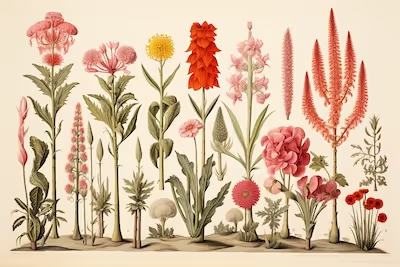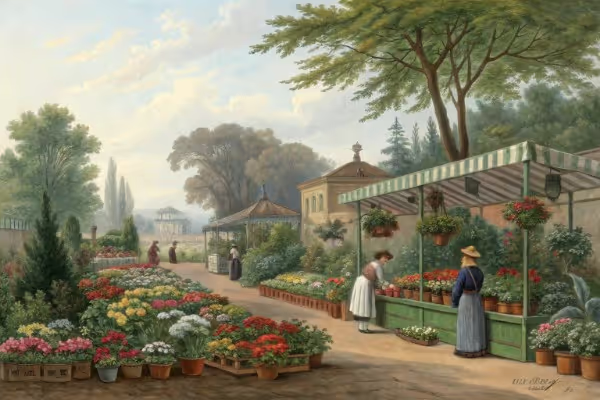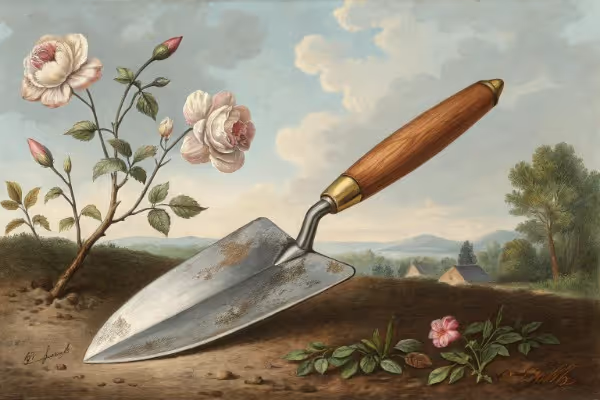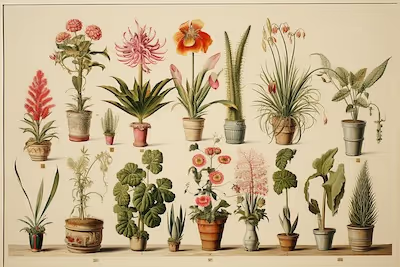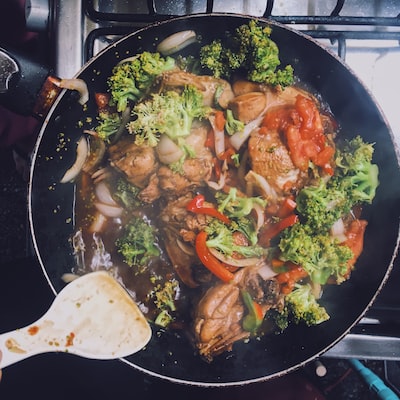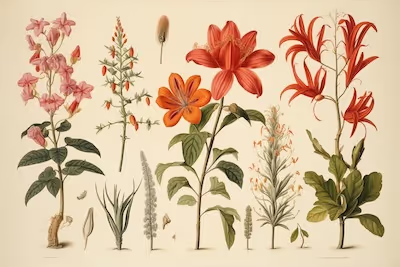Tomato plant not flowering? Key causes and how to fix them
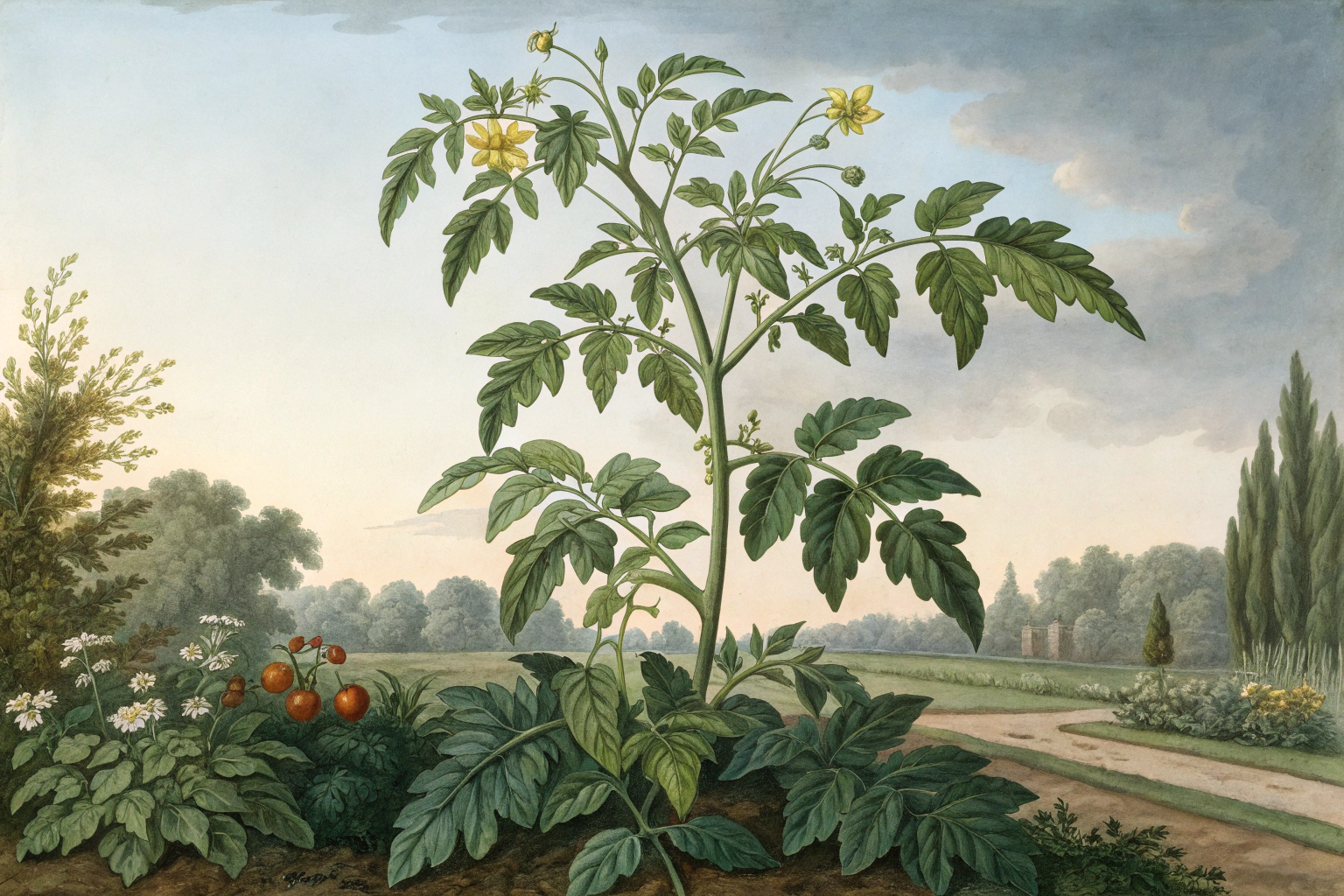
Tomato plant not flowering
Tomato plant not flowering? Prune excess foliage, check sunlight—tomato plant not flowering often signals stress. Boost phosphorus, and avoid high nitrogen; a tomato plant not flowering may lack these essentials. Settle in for straight talk on coaxing reluctant blooms and getting your plants to fruit with confidence.
Cheatsheet: Tomato Blooms Missing? Fix It Fast
🌡️ Check Temperature
- Ideal: 70-85°F (21-29°C) day, 55-70°F (13-21°C) night. Below 55°F/13°C or above 90°F/32°C halts blooms.
☀️ Increase Sunlight
- Minimum: 6-8 hours full sun daily. Less light, fewer flowers.
💧 Water Consistently
- Keep soil moist: Not soggy. Mulch to reduce evaporation.
🧪 Adjust Nutrients
- Skip high-nitrogen fertilizer. Choose one labeled low N, high P-K.
- Phosphorus (P) fuels blooms. Look for middle number: e.g., 5-10-10.
✂️ Prune Smartly
- Remove suckers below first flower cluster. Directs energy to flowering.
🍃 Avoid Stress
- Prevent drought, soggy roots, pests, disease. Healthier plants flower more.
🌱 Use Proper Varieties
- Compact/determinate types flower earlier. Look for "early" or "cold set" on label.
🛠️ Tools and Products You'll Need
- Low-nitrogen tomato fertilizer
- Organic mulch
- Pruning shears
- Soil thermometer
- Sunlight meter (optional)
📊 Stats & Tips
- 78% of fruit loss comes from poor bloom set. Steady care = 2x yield.
- Tomatoes provide vitamin C, lycopene, and self-grown security.
Tomato plant not flowering? Key causes and how I fix them
I read plants like a bartender reads a Tuesday regular, and a tomato plant not flowering usually screams one of a few things: heat, nitrogen, shade, roots, or stress. I have torched entire July crops by ignoring those five.
Heat or cold stalls buds
Tomatoes are day neutral, yet temperature drives their hormones. Buds stall, dry, or never form when the air swings out of the sweet spot.
Target steady days around 70 to 85 F, 21 to 29 C, and nights near 60 to 68 F, 16 to 20 C. Bursts above 90 F, 32 C, or nights below 55 F, 13 C, can shut down flower initiation.
“Blossom problems spike when temperatures dip below 55 F or climb above 90 F,” reports University of California Agriculture and Natural Resources.
On my hottest patio, a 30 percent shade cloth during 1 to 5 p.m. kept trusses coming. A cheap max-min thermometer caught the real story, not the app fantasy.
Too much nitrogen and the wrong NPK
If the foliage looks like a spinach advertisement and there are no clusters, you fed lawn food. High nitrate pushes vegetative growth and suppresses flowering signals.
Switch to a low N, higher P and K feed once plants reach first truss: think 3-4-6, 4-6-3, or 2-5-8. I spoon-feed 1 tablespoon, 15 ml, per gallon, 3.8 l, every 10 to 14 days, then adjust to leaf color and bloom count.
“Excess nitrogen favors leaves at the expense of flowers,” notes University of Minnesota Extension.
Watch electrical conductivity if you grow in containers. An EC above 2.5 mS/cm in soilless media has stalled my blooms, so I leach with clear water until runoff EC drops by half.
Light intensity beats day length
Tomatoes flower on their own clock, but dim light drags that clock. Six to eight hours of direct sun is the floor.
In dim courtyards, I supplement to about 300 to 600 PPFD for 12 to 14 hours with full-spectrum LEDs hung 18 to 24 inches, 45 to 60 cm, above the canopy. The difference shows in two weeks of tighter internodes and emerging clusters.
“Full sun is essential for tomatoes,” advises the Royal Horticultural Society.
Plant age, variety, and the patience tax
Cherries and early slicers throw first clusters around 5 to 7 weeks from transplant. Big beefsteaks and heirlooms can take 8 to 10.
Determinates hit once then coast. Indeterminates pace themselves like long-distance runners, so pruning and feeding strategies matter more for them.
Water stress and humidity swings
Wilt and surge watering cues stress ethylene, and buds abort. I aim for 1 to 1.5 inches of water weekly, 2.5 to 3.8 cm, deeper in heat, with 2 to 3 inches, 5 to 7.5 cm, of mulch.
Humidity matters for pollen and bud survival. Keep it near 40 to 70 percent, or use a morning mist and a light oscillating fan to keep air moving.
“Pollen viability drops in very high or very low humidity,” notes Texas A&M AgriLife Extension.
Root room, pH, and salts
Rootbound plants act like caged cats, all leaves and no romance. I use at least 10 gallons, 38 l, per vine outdoors, and 5 gallons, 19 l, only for dwarfs.
Keep pH at 6.2 to 6.8 for nutrient uptake. If growth is dark and lush but shy on blooms, check salts and pH before you blame the seed.
“Tomatoes prefer slightly acidic soils, roughly pH 6.2 to 6.8,” Cornell Cooperative Extension reminds growers.
Pruning, training, and energy allocation
On indeterminates, I prune to one or two leaders and remove suckers below the first flower cluster. That channels carbohydrates into trusses instead of a jungle of leaves.
On determinates, I barely touch them. Over-pruning determinates delays or cancels the main flush, which can look like zero flowers for weeks.
Pests, disease, and chemical drift
Russet mites and broad mites bronze foliage, crisp tips, and drop buds. A hand lens tells the truth, and sulfur dust or wettable sulfur knocks russet mites back fast if applied early.
2,4-D drift twists petioles and ruins flowering. Viruses like TSWV halt growth and bloom, so I rogue those plants and do not argue with the diagnosis.
Bud drop vs no buds at all
No buds at all points to light, nitrogen, or plant age. Buds that appear then vanish point to heat spikes, humidity extremes, mites, or root stress.
I flick trusses at midday to test stability. If they shatter or powder, I fix humidity and heat first.
Quick fixes that have saved my season
- Move pots to full sun or add LEDs to hit 300 to 600 PPFD at canopy level.
- Swap high-nitrogen fertilizer for low N, higher P and K, then feed lightly but consistently.
- Install 30 percent shade cloth during the hottest window and water in the morning.
- Up-pot to 10 to 15 gallons, 38 to 57 l, if roots circle the pot wall.
- Leach salts until runoff EC drops, then resume half-strength feeding.
- Keep pH between 6.2 and 6.8, using a soil test kit before chasing ghosts.
- Add mulch and aim for even moisture, never sopping, never droughty.
- Scout with a 10x lens for mites or thrips on undersides and newest growth.
My field notes: what each symptom usually means
- Lush, dark leaves and no clusters: excess nitrogen or low light.
- Small pale leaves, tight internodes, slow growth: low fertility or low temps.
- Buds form, then dry and drop: heat spike, low humidity, or mites.
- Twisted, strappy growth after mowing day: herbicide drift.
- Flowers appear late only at the top: rootbound or chronic underwatering.
Top gear and inputs I actually buy for bloom-friendly tomatoes
- Bloom fertilizers that behave: 3-4-6 organic granular, 4-6-3 tomato formulations, or a 2-5-8 liquid for containers.
- Shade cloth: 30 percent for heatwaves, 40 percent for desert patios.
- LED grow lights with a dimmer and known PPFD map: target 300 to 600 PPFD at plant height.
- Soil pH and EC meter: a pocket combo meter has saved more plants than any tonic.
- 10 to 15 gallon, 38 to 57 l, grow bags with sturdy seams and breathable fabric.
- Wettable sulfur for russet mites and early powdery pressure, applied in cool hours.
- Clip-on oscillating fan for still greenhouses, low speed all day.
Varieties that flower early and dependably for me
- Cherry types: ‘Sungold’, ‘Black Cherry’, ‘Gardener’s Delight’. They show first truss fast in 5 to 6 weeks post-transplant.
- Early slicers: ‘Stupice’, ‘Glacier’, ‘Early Girl’. Good in cool nights near 50 F, 10 C, with quicker bloom.
- Dwarfs for small pots: ‘Tasmanian Chocolate’, ‘Rosella Purple’. Compact, easy to light well on balconies.
Fertilizer timing that keeps the flowers coming
I feed a balanced starter at transplant, then hold nitrogen steady and lean into potassium at first truss. Phosphorus matters early, yet overdoing it locks up micronutrients and does not speed blooms.
Seaweed extracts can help plants ride heat, yet they are not a magic switch. Epsom salts only help if a magnesium deficiency is confirmed, so I test before I toss.
Container growers: special notes
Use a peat or coir based mix with perlite for drainage. Add 10 to 15 percent finished compost for cation exchange without turning the pot into concrete.
Water by weight of the pot, not by calendar. If runoff EC climbs or leaf tips crisp, flush, then resume lower concentration feeding.
Field growers: soil and spacing
Space 18 to 24 inches, 45 to 60 cm, within rows, and 36 to 48 inches, 90 to 120 cm, between rows for air and light. Side-dress with a low N, higher K blend at first bloom, then again three weeks later.
Mulch with clean straw to steady moisture and keep soil heat temperate. Stake or trellis early so stems do not sprawl and hide trusses from sun.
Pollination tricks that help once flowers appear
Even though they self-pollinate, I tap the support line or use an electric toothbrush on the stem near noon on still days. That vibration releases pollen like a summer rain on a tin roof.
Keep humidity near 50 to 65 percent during flowering if possible. In greenhouses, vent early and often to avoid sticky pollen that clumps.
My troubleshooting flow, step by step
- Check temperature highs and lows for the past 7 days using a max-min thermometer.
- Count hours of direct sun on the canopy, then correct with pruning or lights.
- Test pH and EC in the root zone, then flush or feed accordingly.
- Inspect for mites and thrips with a 10x lens, treat fast if found.
- Assess pot size or root restriction, then up-pot if circling roots show.
- Adjust fertilizer to a lower N, higher K pattern and watch new growth and truss count.
- Add shade cloth for heat spikes and a fan for stagnant, humid pockets.
Numbers that guide my decisions
- Ideal day and night for flowering: 75 F day, 24 C, and 63 F night, 17 C.
- Sunlight target: 6 to 8 hours direct, or 300 to 600 PPFD indoors.
- Soil or media pH: 6.2 to 6.8, with calcium and magnesium balanced.
- Weekly water: 1 to 1.5 inches, 2.5 to 3.8 cm, adjusted for heat and wind.
- Fertilizer pattern: low N after first truss, emphasize K for continuous flowering.
Why this all works
Flowering in tomatoes is a resource decision by the plant, a handshake between light, temperature, and nutrient signals. Get those in tune, and trusses appear like a metronome, one after another.
I have pulled plants back from leafy silence in ten days with these steps. The first cluster shows, then the second, then you start staking again and life feels right.
Sources I trust and re-read every season
- University of California Agriculture and Natural Resources: tomato stress and blossom problems.
- Royal Horticultural Society: cultural requirements for tomatoes and light guidance.
- University of Minnesota Extension: nutrient balance and nitrogen effects on flowering.
- Cornell Cooperative Extension: soil pH ranges and nutrition for solanaceous crops.
- Texas A&M AgriLife Extension: temperature and humidity effects on blossoms and fruiting.

Want smarter plant choices? 🪴
Frequently Asked Questions: Troubleshooting Lack of Tomato Blooms
Why do my tomatoes have healthy leaves but refuse to set buds?
If your plants boast lush, leafy growth but produce no blossoms, nitrogen imbalance often causes this problem. An excess of nitrogen fertilizer pushes foliage growth at the expense of flowers. Use a balanced fertilizer with a higher percentage of phosphorus and potassium to encourage flowering. Avoid over-fertilizing with high-nitrogen products.
How does temperature affect flower production?
High daytime temperatures above 85°F (29°C) or nighttime temperatures above 70°F (21°C) can prevent tomatoes from blooming. On the flip side, prolonged temperatures below 55°F (13°C) also suppress bud development. Provide afternoon shade in hot climates or use protective covers in cooler areas to maintain ideal temperatures.
Can improper watering stop buds from forming?
Inconsistent watering stresses tomato plants and may halt flower development. Keep the soil evenly moist, aiming for around 1–2 inches (2.5–5 cm) of water per week. Avoid both waterlogged and completely dry soil, as either extreme can disrupt the flowering process.
Does light exposure influence bloom production?
Tomatoes need at least 6 to 8 hours of direct sunlight daily. Insufficient light leads to leggy growth and few or no blossoms. If your plants sit in shade for much of the day, relocate them or prune nearby vegetation to maximize sun exposure.
Will container size limit my plant’s ability to produce flowers?
Tomatoes grown in small pots may become root-bound, restricting growth and reducing flowering. Use containers with a minimum capacity of 5 gallons (19 liters) per plant and ensure there are drainage holes. This allows roots to establish and supports healthy flower development.
Could plant diseases or pests prevent flowering?
Diseases such as early blight or pests like aphids and whiteflies can weaken plants and stunt flowering. Examine leaves and stems for signs of insects or fungal spots. Address infestations promptly with organic or chemical controls, as needed, to restore vigor and encourage buds.
Tomato plant not flowering is a classic headache, but the fix calls for a close look at the basics. Check your sunlight—tomatoes crave full sun. Too much nitrogen? Expect lush leaves, but few blooms. Keep your watering steady, not soggy. Temperatures matter; wild weather messes with fruit set. Skip the guesswork and grab the right fertilizer. If you’re growing in pots, size and soil matter: see the rundown on garden pots for growing vegetables. Sometimes, you do everything right and nature still refuses. That’s gardening. Stick with it, tweak what you can, and let the tomatoes teach you patience. For more tough-love vegetable tips, give our blog a look.
The Science Behind Tomato Plants Refusing to Flower
Tomatoes measure their world in cues: temperature, light, nutrients, and stress triggers. Sometimes, even a thriving green specimen skips flowering because internal signals override outward health. Understanding this response can mean the difference between barren leaves and a bounty of blossoms.
Temperature: The Primary Switch
- Optimal bloom initiation: 70–80°F (21–27°C) days, 59–68°F (15–20°C) nights.
- High heat stalling: Above 85°F (29°C) daytime or 72°F (22°C) nights, plants halt bloom formation to minimize stress and water loss, shifting energy to survival.
- Low temp dormancy: Below 55°F (13°C), enzymes for reproductive growth slow and pollen production fails.
Hormonal Checks and Balances
- Gibberellins: Spur stem and leaf growth but in excess suppress flowering. Excess nitrogen or vigorous pruning stimulates gibberellin, delaying blooms.
- Florigen: Protein signal that triggers buds to bloom. Short or interrupted photoperiods can block this signal even if conditions look optimal.
Genetics: Inherited Timing
- Modern hybrids bred for uniformity flower predictably; heirlooms tie flower timing to day length, with some needing over 12 hours of light for weeks before bloom.
- Cherry and determinate types typically flower faster regardless of weather.
Stress Memory in the Seedling Stage
- Early drought or over-fertilization during seedling growth cause epigenetic changes, making mature plants less likely to bloom quickly, even under ideal adult conditions.
Nutrition and Flowering Genes
- Low phosphorus disrupts a plant's ability to activate key flowering genes; even moderate deficiency slows transition from leaf to bloom.
- Excessive nitrogen locks plants in vegetative mode by upregulating genes that favor stem and leaf expansion.
Self-Sufficiency Takeaway
Start with stable temperatures. Limit nitrogen after transplanting. Encourage phosphorus and potassium. Direct sow or select early-flowering types for fickle climates. Monitor local light durations if growing heirlooms. Every effort at the cellular level stacks long-term harvest security for your household.
Find out which plants will thrive in your garden!
Answer a few fun questions and get custom plant recommendations perfect for your space. Let’s grow something amazing together!

start your season
